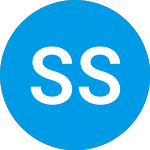
We could not find any results for:
Make sure your spelling is correct or try broadening your search.

 RC_702
1 week ago
RC_702
1 week ago
 RC_702
2 weeks ago
RC_702
2 weeks ago
 RC_702
2 weeks ago
RC_702
2 weeks ago
 Southern Gal
3 weeks ago
Southern Gal
3 weeks ago
 Southern Gal
3 weeks ago
Southern Gal
3 weeks ago
 RC_702
1 month ago
RC_702
1 month ago
 RC_702
3 months ago
RC_702
3 months ago
 RC_702
3 months ago
RC_702
3 months ago
 RC_702
3 months ago
RC_702
3 months ago
 RC_702
3 months ago
RC_702
3 months ago
 Southern Gal
3 months ago
Southern Gal
3 months ago
 Southern Gal
3 months ago
Southern Gal
3 months ago
 RC_702
4 months ago
RC_702
4 months ago
 RC_702
4 months ago
RC_702
4 months ago
 Southern Gal
4 months ago
Southern Gal
4 months ago
 Southern Gal
4 months ago
Southern Gal
4 months ago
 RC_702
4 months ago
RC_702
4 months ago
 Southern Gal
4 months ago
Southern Gal
4 months ago
 Southern Gal
4 months ago
Southern Gal
4 months ago
 RC_702
4 months ago
RC_702
4 months ago
 RC_702
4 months ago
RC_702
4 months ago
 Southern Gal
4 months ago
Southern Gal
4 months ago
 Southern Gal
4 months ago
Southern Gal
4 months ago
 Southern Gal
4 months ago
Southern Gal
4 months ago
 RC_702
4 months ago
RC_702
4 months ago
 RC_702
4 months ago
RC_702
4 months ago
 RC_702
4 months ago
RC_702
4 months ago
 Southern Gal
4 months ago
Southern Gal
4 months ago
 RC_702
4 months ago
RC_702
4 months ago
 RC_702
4 months ago
RC_702
4 months ago
 RC_702
4 months ago
RC_702
4 months ago
 RC_702
4 months ago
RC_702
4 months ago
 Southern Gal
4 months ago
Southern Gal
4 months ago
 Southern Gal
4 months ago
Southern Gal
4 months ago
 RC_702
4 months ago
RC_702
4 months ago
 RC_702
4 months ago
RC_702
4 months ago
 RC_702
4 months ago
RC_702
4 months ago
 Southern Gal
4 months ago
Southern Gal
4 months ago
 RC_702
4 months ago
RC_702
4 months ago
 RC_702
4 months ago
RC_702
4 months ago
 RC_702
4 months ago
RC_702
4 months ago
 RC_702
4 months ago
RC_702
4 months ago
 Southern Gal
5 months ago
Southern Gal
5 months ago
 Southern Gal
5 months ago
Southern Gal
5 months ago
 Southern Gal
5 months ago
Southern Gal
5 months ago
 Southern Gal
5 months ago
Southern Gal
5 months ago
 Southern Gal
5 months ago
Southern Gal
5 months ago
 Southern Gal
5 months ago
Southern Gal
5 months ago
 Southern Gal
5 months ago
Southern Gal
5 months ago

It looks like you are not logged in. Click the button below to log in and keep track of your recent history.
Support: 1-888-992-3836 | support@advfn.com
By accessing the services available at ADVFN you are agreeing to be bound by ADVFN's Terms & Conditions